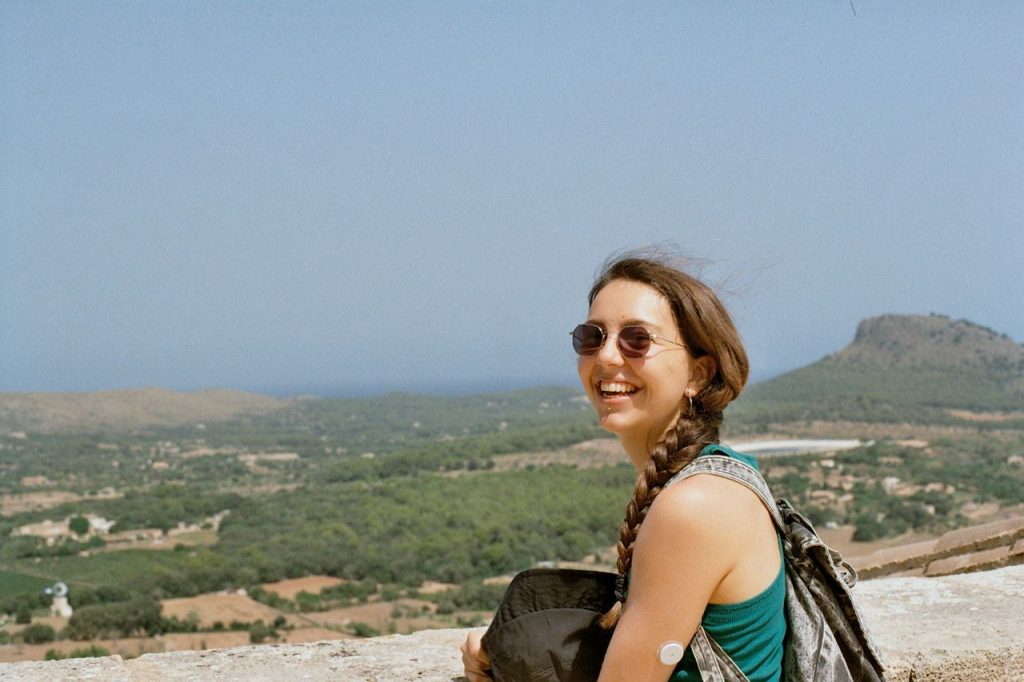13.2.2023 Melina Estela Dalmau: Beyond what is seen
Melina Estela Dalmau: Beyond what is seen
Last November I travelled from Mallorca to Kuopio to join the Multiscale Imaging Group at the A. I. Virtanen Institute. The reason: to start an exciting project in the field of neuroscience. I am delighted with the opportunity to be here to do research on this topic, as my background is quite distant from neuroscience. I studied Mathematics, a field that scares so many people despite its beauty. But during the fourth year, between topology and differential equations, I read The Brain by David Eagleman. Whether this was the bifurcation (never better said) into the biomedical field, I cannot say for sure. But somehow, something changed.

Briefly, the project I just started seeks to connect two worlds: the world of things we see, with the world of those things invisible to the naked eye.
How the brain works and everything that remains to be understood about it fascinates me deeply. It is incredible that such complex processes as language, memory, reasoning or consciousness, can fit into a finite space with a finite number of elements! And how its physical deterioration or damage is reflected in so many ways and diseases. In this sense, with this PhD I aim to contribute to seeing beyond what is known today. Briefly, the project I just started seeks to connect two worlds: the world of things we see, with the world of those things invisible to the naked eye. What does this have to do with neuroscience? Let me explain it to you.
The most common procedure to study non-invasively the inside of the skull is magnetic resonance imaging (MRI). These techniques, by combining powerful magnets and radio waves, make it possible to generate images of the brain and even see it in three dimensions. Broadly speaking, grey matter, white matter and cerebrospinal fluid can be visualized. But not solely, they also allow to detect edema, tumors or inflammation, as well as to infer the microstructure of the tissue. Thus, making it possible to diagnose diseases, check how they evolve or study the response to treatments. And all this without using radiation! Therefore, MRI is the method of choice to extract information of the brain tissue and structure. And it is my analogy to the visible world.
Motivation
MRI methods have a fundamental constraint: the voxel size. As you may have experienced, the more pixels an image has, the more detail we see. In fact, does anyone choose to watch a film in 360p resolution when it can be watched in 1080p? Well, I am sorry to tell you that currently, we still cannot see the brain in vivo in high resolution. To give you an idea of the situation, in clinical settings the voxel size is more than 1 millimeter (that is, the fine tip of a pencil). Whereas the sizes of cellular components in the tissue are much smaller: cell bodies of neurons can be 0.1 millimeters in diameter while the diameter of axons is even smaller, about 1 to 2 micrometers.
Let us look at it another way. Knowing that in a mature human brain there are approximately 100 billion neurons and assuming a volume of 1.200 cubic centimeters, this translates into an average of 80.000 neurons in each cubic millimeter. Keep in mind that this is an average, since the brain is not homogeneous, i.e., the number of neurons varies enormously depending on the region. In fact, there are more than just neurons in the brain! Consequently, the value of each MRI voxel comes from the contribution of thousands of components: individual neurons, glial cells, neurites or vessels, and all of them end up as an averaged value. What this means is that microstructural information is lost when imaging the brain. And we don’t want that!
Challenge
Can we find a bridge between imaging and brain tissue? That is the question my supervisor Dr. Alejandra Sierra proposed to me. By extracting knowledge from the nanoscale (that is, from microscopy techniques) we pursue a better understanding and improvement of MRI. The integration of tissue information into the validation of MRI techniques requires a multidisciplinary approach including imaging, mathematics, computer science and neuroscience. Personally, this point is what makes this project more interesting, because it will require constantly learning about other fields and thinking about ways to combine them.
Several fields of science will benefit from this doctoral research, from the understanding of MRI at the tissue level to the development of novel tools for tissue modeling and computational analysis methods. In fact, by improving current imaging techniques, new biomarkers of brain diseases may be found, which will help in the diagnosis and treatment of ailments that affect millions of people worldwide.
As you can see, the field of neuroscience can be approached from many perspectives. I have just started on this path: seeing beyond. What is yours?